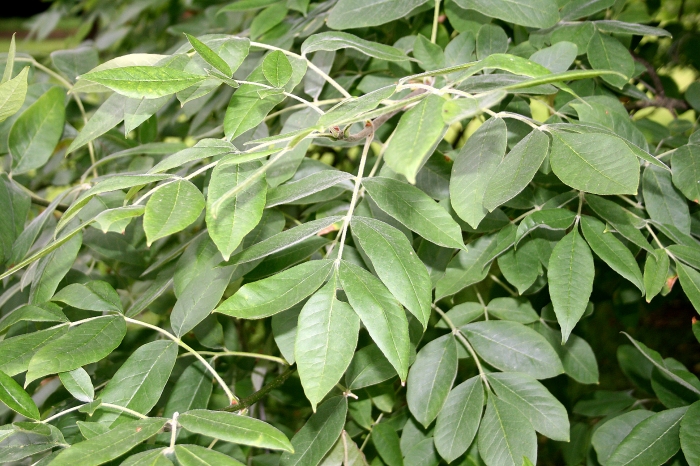Oregon Ash
(Fraxinus latifolia)
Oregon Ash (Fraxinus latifolia)
/
/

Jean-Pol GRANDMONT
CC BY 3.0
Image By:
Jean-Pol GRANDMONT
Recorded By:
Copyright:
CC BY 3.0
Copyright Notice:
Photo by: Jean-Pol GRANDMONT | License Type: CC BY 3.0 | License URL: https://creativecommons.org/licenses/by/3.0 | Uploader: Jean-Pol GRANDMONT | Publisher: Wikipedia Commons | Title: Fraxinus_latifolia_JPG1Fe.jpg | Notes: Oregon Ash leaves - Fraxinus latifolia Bent. syn. Fraxinus oregona Nuth. Precice location: National Botanic Garden of Belgium - Meise (Belgium). | Permission: I, the copyright holder of this work, hereby publish it under the following license: | Object































































Estimated Native Range
Summary
Fraxinus latifolia, commonly known as Oregon Ash, is a deciduous tree native to the Pacific Northwest, specifically riparian zones, wetlands, and occasionally in upland forests of Washington, Oregon, and California. This species is adapted to moist environments and is often found along streams and in seasonally flooded areas. Oregon Ash typically grows to 20–25 meters (65–80 feet) in height, with a trunk diameter of 40–75 centimeters (16–30 inches), but can live over 200 years and grow larger in optimal conditions or remain stunted in drier habitats. It develops a broad crown when grown in open spaces, resembling that of a bigleaf maple, but maintains a narrow crown in denser forests, similar to red alder. The bark is dark gray–brown with a distinctive woven pattern of deep fissures and ridges.
The leaves of Oregon Ash are a lighter green compared to other broadleaf species and turn bright yellow before falling off early in autumn, providing a brief but striking display. The tree is valued for its adaptability to wet conditions and is often used in restoration projects to stabilize streambanks and enhance wildlife habitat. It is also planted in urban settings for its shade and aesthetic appeal. Oregon Ash is susceptible to diseases such as ash dieback and pests like the emerald ash borer, which can cause significant damage. In cultivation, it thrives in full sun to part shade and requires soils with good moisture, tolerating a range of drainage conditions. It is important to note that Oregon Ash is dioecious, requiring both male and female plants for successful pollination and reproduction.CC BY-SA 4.0
The leaves of Oregon Ash are a lighter green compared to other broadleaf species and turn bright yellow before falling off early in autumn, providing a brief but striking display. The tree is valued for its adaptability to wet conditions and is often used in restoration projects to stabilize streambanks and enhance wildlife habitat. It is also planted in urban settings for its shade and aesthetic appeal. Oregon Ash is susceptible to diseases such as ash dieback and pests like the emerald ash borer, which can cause significant damage. In cultivation, it thrives in full sun to part shade and requires soils with good moisture, tolerating a range of drainage conditions. It is important to note that Oregon Ash is dioecious, requiring both male and female plants for successful pollination and reproduction.CC BY-SA 4.0
Plant Description
- Plant Type: Tree
- Height: 65-85 feet
- Width: 35-50 feet
- Growth Rate: Moderate
- Flower Color: N/A
- Flowering Season: Spring
- Leaf Retention: Deciduous
Growth Requirements
- Sun: Full Sun, Part Shade
- Water: Medium, High
- Drainage: Fast, Medium, Slow
Common Uses
Bee Garden, Bird Garden, Butterfly Garden, Erosion Control, Fire Resistant, Fragrant, Low Maintenance, Water Garden
Natural Habitat
Riparian zones, wetlands, and occasionally in upland forests of the Pacific Northwest
Other Names
Common Names: Oregon-Esche
Scientific Names: Fraxinus latifolia , Fraxinus californica , Fraxinus oregona , Fraxinus oregona var. latifolia , Fraxinus oregana , Fraxinus oregona var. glabra , Fraxinus pennsylvanica subsp. oregona , Fraxinus americana subsp. oregana , Fraxinus americana subsp. oregona , Fraxinus oregona f. pulverulenta
GBIF Accepted Name: Fraxinus latifolia Benth.